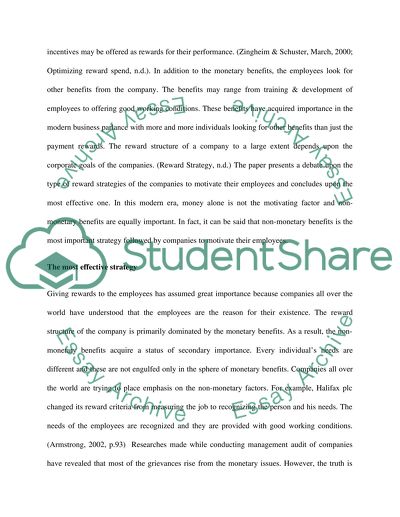Cite this document
(“Some HR managers assume that money is the most effective reward Essay”, n.d.)
Retrieved from https://studentshare.org/miscellaneous/1562820-some-hr-managers-assume-that-money-is-the-most-effective-reward-strategy-for-increasing-the-motivation-and-productivity-of-all-their-employees-to-what-extent-do-you-agree-or-disagree-with-this-statement
Retrieved from https://studentshare.org/miscellaneous/1562820-some-hr-managers-assume-that-money-is-the-most-effective-reward-strategy-for-increasing-the-motivation-and-productivity-of-all-their-employees-to-what-extent-do-you-agree-or-disagree-with-this-statement
(Some HR Managers Assume That Money Is the Most Effective Reward Essay)
https://studentshare.org/miscellaneous/1562820-some-hr-managers-assume-that-money-is-the-most-effective-reward-strategy-for-increasing-the-motivation-and-productivity-of-all-their-employees-to-what-extent-do-you-agree-or-disagree-with-this-statement.
https://studentshare.org/miscellaneous/1562820-some-hr-managers-assume-that-money-is-the-most-effective-reward-strategy-for-increasing-the-motivation-and-productivity-of-all-their-employees-to-what-extent-do-you-agree-or-disagree-with-this-statement.
“Some HR Managers Assume That Money Is the Most Effective Reward Essay”, n.d. https://studentshare.org/miscellaneous/1562820-some-hr-managers-assume-that-money-is-the-most-effective-reward-strategy-for-increasing-the-motivation-and-productivity-of-all-their-employees-to-what-extent-do-you-agree-or-disagree-with-this-statement.


